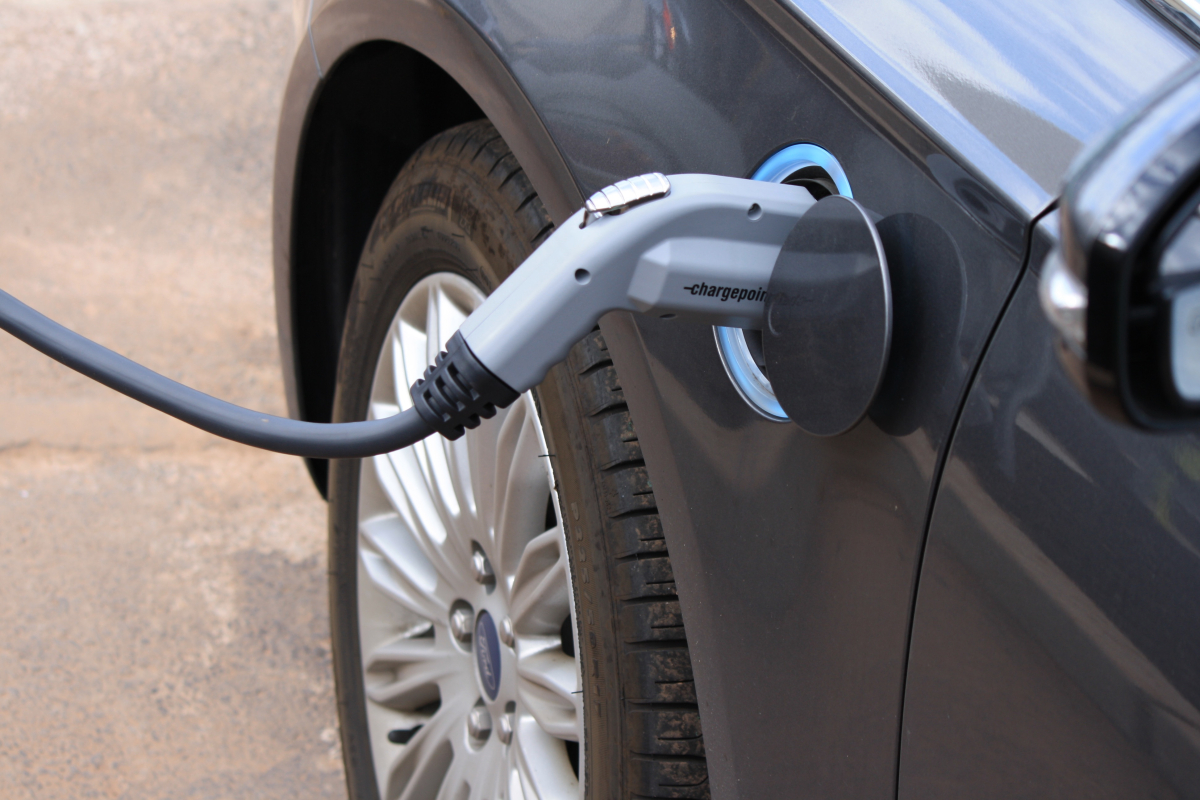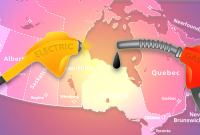Canadians are pulling the short straw when it comes to affordable EV models

The Volkswagen “ID. Buzz” minivan will soon make its debut on Canadian streets, becoming the second electric vehicle in Volkswagen’s North American portfolio. While it’s sure to make a splash with retro-loving adventure types, it likely won’t be priced within reach for many budget-conscious families actually spending their summer camping (the Buzz retails for the equivalent of C$105,000 in the UK and C$97,000 in Germany). Canadian car buyers are still waiting on VW’s more affordable ID.3 model, available in Europe but not in North America, as the story so often goes.
Europeans can choose from no less than 11 different electric options with a purchase price of less than C$45,000, compared to just two in Canada (the Chevrolet Bolt, which has been discontinued until 2025, and the Fiat 500e). Our friends across the Atlantic also have 52 electric hatchbacks on offer, compared to the four available in Canada. It’s no wonder EVs in Europe now make up 24 per cent of all new cars sold, double Canada’s EV market share. Similarly, China, home of BYD’s sub-$20,000 Seagull — among many other high-quality, low-priced EV models — is seeing EV sales soar to 44 per cent.
It’s a real shame for affordability-minded Canadians, when we know that EV owners can save some $3,000 per year compared to their gas-car-driving neighbours. Compare those lifetime savings with the Ford government’s recent budget proposal in Ontario to extend gas tax cuts, saving households about $320 over 2.5 years.
EVs have also been a great economic story for the Canadian auto sector, which has attracted $46 billion in new investments across the EV supply chain and taken the top spot in Bloomberg’s annual battery supply chain ranking in just the last few years. With that supply chain projected to employ 250,000 Canadians by 2030, the transition to EVs seemed to be breathing new life into this important sector of the Canadian economy.
Enter Chinese EVs.
Those nearly $50 billion in investments were clearly on the mind of Canada’s minister of finance when she announced a 30-day consultation on EV tariffs late last month to “protect Canada’s auto workers and its growing EV industry.”
The announcement was made on the tail of a similar move by the United States, which recently introduced a 100 per cent tariff on Chinese-made EVs, and the EU, which applied its own tiered approach of 17 to 38 per cent tariffs. These tariffs are meant to level the playing field for domestic producers facing competition from high-quality, low-cost Chinese EVs.
While a tariff mirroring the U.S.’s may be seen by many as a win for Canada’s auto sector, an inelegant trade move could result in even fewer models and higher prices for Canadian consumers.
Protecting Canadian jobs and workers is clearly an important priority, but securing these investments — and ensuring Canada’s EV workers will have good jobs far into the future — also depends on strong and growing EV demand. And strong EV demand depends on building and offering EVs that Canadians want — and can afford.
Canadian car buyers are clearly interested in affordable EVs. Last year, the Chevrolet Bolt was Canada’s third-best-selling EV, with twice as many sales as any other non-Tesla thanks to a $40,000 sticker price made even lower with government rebates. Unfortunately, the Bolt has been temporarily discontinued, leaving an affordability gap in Canada’s EV market.
A tariff on Chinese-made EVs could widen this gap further by reducing the already limited number of affordable EV options available to Canadians and blocking Chinese competition that could otherwise help drive down the price of EVs.
Case in point: the new compact Volvo EX30, which was the driving force behind the year-over-year increase of 75 per cent in the automaker’s EV sales in Europe this April, has been delayed in the U.S. until 2025, almost certainly because of the new U.S. tariff.
In short, Canada keeps getting locked out of affordable EV options, and a tariff on Chinese-made EVs isn’t going to make things better. We must use this opportunity to solve the EV affordability problem instead of making it worse.
First, the federal government must take a nuanced approach to designing any trade response so it balances the interests of Canadian industries, auto workers and consumers. Part of this approach could be to place conditions on domestic producers that would benefit from the tariff’s protection, such as commitments to stick to EV-related production timelines (good for workers), investments in charging infrastructure and the prioritization of affordable EV models (good for consumers).
In exchange for tariffs on Chinese-made EVs — which will benefit EV battery plants and workers almost exclusively in Ontario at the risk of exposing other sectors in other provinces to Chinese retaliation — the federal government should also seek a commitment from Ontario to introduce consumer EV rebates.
Nearly all other Canadian provinces offer such incentives. Taking into account the US$7,500 EV tax credit available to all states, Ontario is now one of the most expensive places in North America to purchase an EV, leading to levels of EV uptake that are below the national average (seven per cent of new car registrations in Ontario are EVs, versus 12.5 per cent nationally) and that pales in comparison to other provincial EV market shares like B.C.’s (22 per cent) and Quebec’s (25 per cent).
It’s time the Ontario government stepped up to help its drivers unlock the cost savings EVs provide.
Finally, the federal government should complement its trade response with an EV affordability package that extends the iZEV program until 2028 when more mainstream Canadian-made EVs come to market, lower the cap on MSRP to qualify for rebates to $50,000 as B.C. has done (which has caused at least some automakers to drop their prices below the cap), and introduce rebates for used EVs.
Crafting a policy package that supports Canadian industries but also considers affordability for consumers will, in the long run, be to our collective advantage. Let’s make sure that, in attempting to protect autoworkers and our EV investments, we don’t ironically undermine the market they’re meant to serve.
Rachel Doran is the director of policy and strategy at Clean Energy Canada, where she brings nearly 20 years of experience in policy, politics and law to advance clean energy solutions.
Joanna Kyriazis is the director of public affairs and the transportation lead at Clean Energy Canada.







Comments
All good points about arriving at a balanced approach. Missing, however, is the need for many more level-3 chargers along all main roads, because range anxiety is the biggest concern of potential buyers. The first question that people ask me about our own EV is: How far will it go an a full charge?. The price is certainly a factor for many people, but the EV's that are offered in Canada at the moment are prices about the same as the average gasoline car.
I've just returned from a trip to the UK and it was noticeable how many more EVs were on the roads compared to where I am in Ontario, inspite of the fact that driveway or garage parking is limited for many.
We have a complete disconnect in policy in Ontario where Doug Ford was boasting about Ford's decision to build EVs in Ontario (since reversed), but there's no incentives for people to actually purchase made in Ontario EVs.
The result of the tariffs will be to give North American car companies reason to further reduce production of electric vehicles citing soft consumer demand due to lack of affordable vehicles, choice, etc. These companies will then ramp up production of ever larger pickup trucks and SUVS (never a supply chain issue with these vehicles) from which they make huge profits. These vehicles will be on the road for another 10-12 years spewing out emissions. Oil company CEOs will applaud the demise of EVs as will premiers Smith, Moe, Ford and Higgs. Pity.